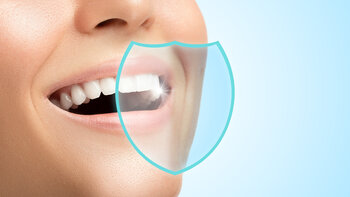Your smile is one of the first things people notice. Whether you have slightly crooked teeth, worn teeth, or chipped ones, you’ve probably heard about dental veneers as a solution. The phrase “teeth prepped for veneers” might sound daunting, but with advancements in medical sciences and the art of cosmetic dentistry, the process has become streamlined and more comfortable than ever. Let’s delve deep into the world of veneer preparation.
What are Dental Veneers?
Veneers are thin shells, usually made of porcelain or composite resin, created to cover the front surface of teeth. These cosmetic restorations are bonded to the existing teeth, transforming your smile makeover from dull or damaged to dazzling.
Understanding Tooth Preparation
The first step to getting traditional porcelain veneers or most composite veneers is tooth preparation. This involves removing 0.5mm of the tooth enamel to ensure the veneer fits seamlessly and naturally. This procedure may sound intense, but with a skilled cosmetic dentist and local anaesthetic, it’s quite straightforward.
Traditional Veneers vs. No Prep Veneers
Traditional veneers require more aggressive tooth preparation compared to no-prep veneers. While traditional veneers tend to be more durable and long-lasting, no prep veneers can be applied without altering the existing tooth structure, making them a more conservative option.
The Dental Veneer Procedure: Step by Step
Initial Consultation: Your journey starts here. The dentist evaluates your cosmetic concerns, discusses the veneer procedure, and might even show before and after photos of satisfied patients. This consultation gives a clear idea of what to expect from your new smile.
Tooth Preparation: For teeth prepped for veneers, the cosmetic dentist removes a thin layer of the tooth enamel. This ensures the veneer adheres securely and aligns well with neighbouring teeth, achieving that symmetrical smile everyone yearns for.
Taking Impressions: After the teeth are prepped, a mould or impression is sent to a dental lab. These professionals craft your porcelain or composite veneers with precision.
Temporary Veneers: While awaiting your permanent veneers, temporary dental veneers may be placed. These protect the prepared tooth and provide a glimpse into your upcoming new teeth.
Fitting the Veneers: Once your veneers are ready, they are checked for fit and colour. Adjustments are made if needed, and then they are securely bonded using dental cement and cured with ultraviolet light.
Addressing Common Concerns
Tooth Sensitivity: After having teeth prepped for veneers, some patients may experience tooth sensitivity. This is temporary and tends to resolve once the permanent veneers are in place.
Duration of the Veneers Procedure: The veneers procedure spans over a few weeks from initial consultation to unveiling your new smile. This allows adequate time for crafting the veneers and ensuring they are a perfect fit.
Cost and Dental Insurance: The investment in veneers varies, with porcelain veneers procedure generally costing more than composite material veneers. While veneers are a cosmetic procedure, some dental insurance plans might offer partial coverage, especially if the veneers are required for structural reasons.
Caring for Your Newly Prepped Teeth
Maintaining an impeccable oral hygiene routine is pivotal. Regular brushing, flossing, and dental check-ups ensure your natural teeth and veneers remain pristine. Moreover, avoid biting on hard objects to prevent any damage to the thin ceramic materials.
Why Choose Veneers?
Beyond the obvious aesthetic appeal, veneers offer a protective layer, especially for broken teeth. They can be a more cost-effective option than dental crowns, especially for those with healthy teeth looking for minor adjustments. Whether addressing crooked teeth or seeking a more symmetrical set of front teeth, veneers work wonders in restoring self-confidence.

The Evolution of Veneers in Cosmetic Dentistry
Dental veneers have significantly transformed in both application and materials used since their inception. Originally, veneers were developed as a temporary solution for actors in Hollywood looking to enhance their smiles for film roles. However, the longevity and aesthetic advantages soon became evident, leading to their adoption in general cosmetic dentistry.
Decoding the Materials: Porcelain vs. Composite Resin
While we touched on the basics of porcelain and composite veneers earlier, let’s delve deeper into their characteristics:
Porcelain Veneers: Crafted from high-quality ceramic materials, these veneers are celebrated for their translucency, mimicking natural teeth’s light-reflecting properties. Porcelain veneers tend to be more stain resistant than their composite counterparts. They can last up to 15 years or longer with proper care.
Composite Resin Veneers: These are typically sculpted directly onto the teeth, allowing for a single-visit transformation. While they may not last as long as porcelain veneers (usually around 5 to 7 years), they are often less expensive and easier to repair.
The Anatomy of a Tooth: Understanding the Prep Process
To appreciate why teeth are prepped for veneers, it’s essential to grasp tooth anatomy. The tooth’s outermost layer, the enamel, is semi-translucent, allowing the dentin layer beneath it to shine through, contributing to the tooth’s colour. When added without preparation, veneers might appear bulky or unnaturally positioned. This is why slight shaving of the enamel is pivotal to achieving a natural and harmonious look.
Advancements in Technology: Modern Dental Labs
The precision required in crafting veneers has immensely benefited from technological advancements. Today’s dental labs are equipped with CAD (Computer-Aided Design) and CAM (Computer-Aided Manufacturing) technology. These digital tools allow for impeccable accuracy in veneer design and fabrication, ensuring they fit perfectly and match the desired shade.
Veneers and Dental Health: More than Just Aesthetics
While veneers are predominantly sought for cosmetic reasons, they also present dental health benefits:
- Protection: Veneers can act as a protective shield for chipped or slightly cracked teeth, preventing further deterioration.
- Alignment and Spacing: For those with slightly crooked teeth or minor spacing issues, veneers can offer a quicker alternative to orthodontic treatments, effectively masking these imperfections.
Potential Risks and How to Mitigate Them
No medical or cosmetic procedure is devoid of risks, and veneers are no exception:
Gum Tissue Reaction: Some people might experience a reaction in the gum tissues adjacent to the new veneers. It’s crucial to monitor any changes and maintain good oral hygiene.
Debonding or Detachment: On rare occasions, the veneer might detach from the tooth. Avoid biting hard objects and using teeth as tools to reduce this risk.
Irreversibility: Teeth prepped for veneers undergo a permanent change. Hence, the decision to get veneers should be well informed.
Optimal Candidates for Veneers: Are They Right for You?
Veneers are versatile, but they aren’t suitable for everyone. Ideal candidates usually have:
- Healthy gums and teeth: Active gum disease or decay may need to be addressed before veneer application.
- Sufficient tooth enamel: An adequate enamel is essential as a thin layer is removed for veneer bonding.
- Commitment to oral hygiene: Veneers, like natural teeth, require meticulous care.
Comparing Veneers with Other Dental Procedures
While veneers are a remarkable cosmetic solution, how do they stack up against other dental procedures?
Dental Crowns: Unlike veneers that cover the tooth’s front surface, crowns encase the entire tooth. They’re more suited for extensively damaged teeth, while veneers are more cosmetic.
Teeth Whitening: A non-invasive procedure, whitening lightens teeth but doesn’t address structural issues. Veneers, conversely, can alter both colour and shape.
Orthodontics: Braces or clear aligners rectify alignment and spacing issues over time. Veneers can offer a quicker, albeit more superficial, solution.
The Financial Aspect: Investing in Your Smile
While veneers can be a significant investment, their transformative power and longevity make them cost-effective over time. Several factors influence the cost:
- Type of Material: Porcelain veneers usually have a heftier price tag than composite resin.
- Technological Advancements: Opting for veneers crafted with the latest tech might cost more but ensures superior results.
- Geographic Location: Depending on the dental office location, dental procedures, including veneers, may vary in cost.
- Dentist’s Expertise: Renowned cosmetic dentists with extensive experience might charge more for their sought-after expertise.
The Psychological Impact: Beyond Aesthetics

A radiant smile can transform more than just facial aesthetics. Numerous patients report increased self-confidence, enhanced social interactions, and a more positive outlook on life post their veneer procedure.
Teeth are intricately linked with self-expression. They play a pivotal role in speech, nourishment, and emotion. Thus, investing in veneers transcends mere cosmetic concerns; it’s an investment in holistic well-being.
Debunking Veneer Myths: Separating Fact from Fiction
With the increasing popularity of dental veneers, myths and misconceptions have cropped up. Let’s debunk some of these for a clearer understanding:
Myth 1: Veneers look fake and too white. Fact: With advancements in dental sciences and bespoke design, veneers can be crafted to match the patient’s natural teeth shade and desired outcome.
Myth 2: Veneer procedures are painful. Fact: While there is some discomfort in the tooth preparation phase, local anaesthetic ensures that patients feel minimal pain during the procedure.
What’s in a Shade? The Art of Choosing the Right Veneer Colour
Veneers offer an exciting opportunity to select the shade of one’s new smile. A spectrum ranging from natural to Hollywood white awaits prospective patients. It’s vital to consider:
- Skin Tone: Your complexion plays a role in what shades might look most natural or striking.
- Personal Style: Some might prefer a subtle change, while others might aim for a dazzling Hollywood smile.
- Aging: Teeth naturally discolour with age. Opting for an ultra-bright shade can sometimes appear less natural in the long run.
The Thin Line: No Prep Veneers vs. Traditional Veneers
The main difference between traditional and no-prep veneers is the degree of tooth preparation required. Let’s explore further:
No Prep Veneers: These are extremely thin veneers that require little to no removal of the natural tooth structure. They’re a more conservative option and can be reversed in some cases.
Traditional Veneers: These necessitate more extensive tooth preparation, ensuring the veneer fits seamlessly without adding bulk. They offer more dramatic results but are irreversible.
The Role of Dental Imaging in Veneer Procedures
Before you commit to veneers, wouldn’t it be wonderful to glimpse the future? Modern cosmetic dentistry uses advanced imaging techniques to offer a ‘preview’ of expected results:
- Digital Impressions: No more biting into a gooey substance; digital scans capture detailed 3D impressions of your mouth.
- Simulation Software: This allows dentists to virtually design the veneers, offering a visual representation of the post-procedure appearance.
- 3D Printing: In some advanced clinics, dentists use 3D printing to make a model of your future smile, providing a tangible preview.
The Emotional Journey: What to Expect
Embarking on a cosmetic dentistry journey, especially something as transformative as veneers, involves a whirlwind of emotions:
- Anticipation: The excitement of soon flaunting a renewed smile.
- Nervousness: It’s natural to feel a bit anxious before the procedure. Communicate with your dentist; their reassurances are backed by experience.
- Adjustment: It might take a while to get used to the new feel and look of your veneers, but soon they’ll feel like a natural part of you.
Post-procedure Care: The First 48 Hours
The initial two days post the veneer procedure are crucial for ensuring the best outcome:
- Diet: It’s best to stick to soft foods and avoid anything that might stain the temporary veneers, like red wine, coffee, or berries.
- Sensitivity: Some patients might experience heightened sensitivity to hot or cold. Using toothpaste designed for sensitive teeth may assist in alleviating this.
- Oral Hygiene: While you should avoid aggressive brushing near the veneered area initially, maintaining good oral hygiene is paramount.
Veneers & Lifestyle: Activities to Reconsider
After getting veneers, some lifestyle adjustments ensure their longevity:
- Sports: If you’re involved in contact sports, wearing a mouthguard is non-negotiable.
- Nail-Biting: This habit can damage the veneers over time.
- Chewing Hard Objects: Biting down on hard candies or ice might lead to chipped or cracked veneers.

Considering the Full Arch: How Many Teeth to Veneer?
When contemplating veneers, a common query is about the number of teeth to be treated. While some may need just one or two veneers to mask a chipped tooth or a gap, others might opt for a complete smile makeover involving eight or more veneers. This decision depends on the current state of your teeth, the kind of change desired, and of course, the budget.
The Partnership: Your Role and Your Dentist’s Role
Successful veneer treatment is a collaborative effort. While your dentist brings their expertise, skills, and experience to the table, your role involves communication, post-procedure care, and regular check-ups. Ensuring you voice your desires and concerns during the initial consultation can significantly affect satisfaction levels.
Time and Veneers: How Duration Impacts Decision Making
The journey to acquiring veneers isn’t an overnight magic trick; it’s a carefully planned series of steps leading to the perfect smile. The duration of the process might influence decisions for many.
- Initial Research: Before even setting foot in a dental office, most patients will spend hours, if not days, scouring the internet, reading reviews, looking at before and after photos, and familiarising themselves with the process.
- Consultation Time: The initial consultation isn’t just a quick chat. It involves a thorough examination, possibly some x-rays, a discussion about personal cosmetic concerns, and mapping out a tentative treatment plan. This phase provides an opportunity to understand the timeline further.
- Waiting Period: After teeth are prepped for veneers and impressions taken, there’s a waiting time. This is when the dental lab crafts the veneers to perfection. Depending on the type of veneers and intricacy, this could range from a few days for composite veneers to a couple of weeks for some porcelain options.
In Conclusion
“Teeth prepped for veneers” is more than just a procedure—it’s a transformative journey. With an amalgamation of art and science, veneers offer a promising horizon to those yearning for a radiant smile. By understanding the process and placing trust in the hands of skilled professionals, the path to that dazzling smile becomes less of a daunting process and more of a thrilling adventure.
Ready to take the next step in your smile journey? Infinity Dental Care is here to guide you every step of the way. Our experienced team strives to ensure your veneer experience is smooth, satisfactory, and smile-worthy. Contact us today at (02) 9159 6237 and embrace the smile you’ve always dreamt of.
References:
https://www.ncbi.nlm.nih.gov/pmc/articles/PMC6311473/
https://docs.bvsalud.org/biblioref/2021/02/1147324/49849-article-text-229156-1-10-20200525.pdf

